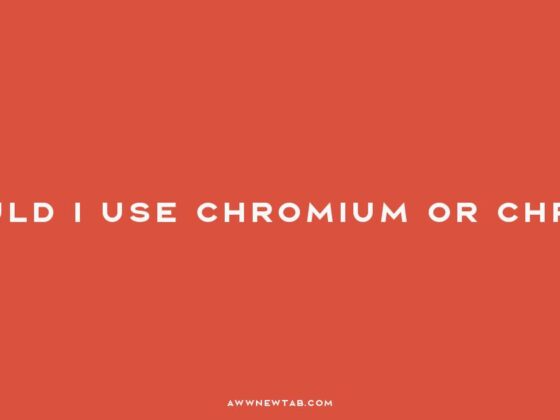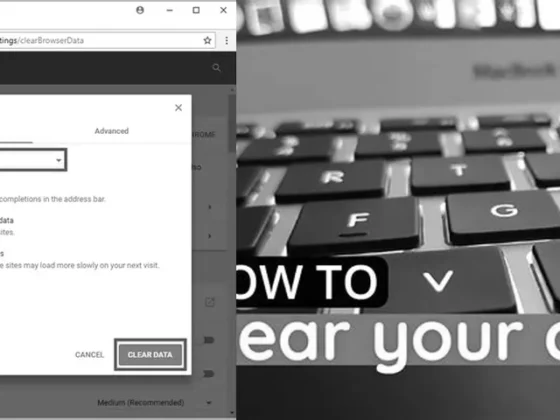How Do I Access Chrome Extension Files: Have you ever wondered where Chrome extension files are hiding on your computer? If you’re someone who loves exploring the inner workings of your favorite browser, then this blog post is perfect for you. Whether you’re a tech-savvy individual or just curious about how things work behind the scenes, we’ve got you covered. In this article, we’ll guide you through the process of locating Chrome extension files, understand where they are stored across different operating systems, and even show you how to enable extensions in the Windows Registry. So, let’s dive in and unravel the secrets of Chrome extension files together!
Locating Chrome Extension Files on Your Computer
Accessing the files for Chrome extensions on your computer can be a useful skill, whether you’re trying to troubleshoot an issue, customize an extension, or simply curious about how they work under the hood. In this guide, we’ll walk you through the steps to locate these files, as well as provide some insights into managing Chrome extensions more effectively.
Step-by-Step Guide to Access Chrome Extension Files
Chrome stores extension files in a specific directory structure. To access them, follow these steps:
- Navigate to the Users directory and select your username.
- Continue through to the AppData folder, then to Local.
- Go into the Google folder, and then into Chrome.
- Finally, open the User Data folder, and then Default.
In this location, you’ll find a plethora of Chrome’s user-specific data, including the files for installed extensions.
Finding Chrome Extensions via Chrome Browser
If navigating through file directories isn’t your preference, there’s an alternative approach using the Chrome browser itself:
- Open Chrome on your computer.
- At the top right, click on the three dots to open the menu and select Extensions.
This will take you to the extensions management page where you can view all installed extensions. To delve deeper:
- Open
chrome://version/in a new tab. - Find the “Profile Path” field. This indicates the directory where your extensions are stored.
- Open that folder on your computer to access the extensions’ files directly.
Each extension will have its own folder, typically named with a unique ID, where you can find the source code and other related files.
Inspecting Extension Files via Developer Tools
For those interested in the more technical aspects of Chrome extensions, developer tools can be a goldmine of information:
- With the extension’s background page open, press F12 to open the developer tools.
- Go to the Application tab.
- In the Storage section, expand Local Storage.
Here you’ll see all of your browser’s local storage, including data stored by extensions. This can be useful for debugging or understanding how an extension operates.
Understanding Where Extensions Are Stored Across Operating Systems
While the steps above are specific to Windows, Chrome extensions are stored in similar user-specific directories across different operating systems:
- macOS: In the Library folder within your user account.
- Linux: In the .config folder within your home directory.
Accessing these folders will depend on the operating system you’re using, but the process remains similar: locate the Chrome or Google Chrome directory, then navigate to the User Data and Default folders.
Enabling Chrome Extensions in the Windows Registry
Advanced users may wish to manage Chrome extensions through the Windows registry. This can be particularly useful for system administrators who need to control extension access across multiple users. Here’s how:
- Press Win + R, type
regedit, and press Enter to open the Registry Editor. - Navigate to the relevant Chrome policy keys, which can typically be found under HKEY_LOCAL_MACHINE or HKEY_CURRENT_USER depending on whether you’re applying the policy system-wide or to a specific user.
- Look for or create a key for extension settings, which might be located in a path similar to
Software\Policies\Google\Chrome\ExtensionInstallForcelist. - Add the IDs of the extensions you wish to manage along with their update URLs.
Remember that editing the registry can affect the stability of your system, so it’s essential to back up the registry before making any changes and to proceed with caution.
Final Thoughts
Accessing Chrome extension files can be a straightforward process, whether you prefer navigating through file directories or utilizing Chrome’s built-in tools. Understanding where these files are stored and how to manage them is crucial not only for developers but also for users seeking to maximize their browsing experience. As with any modifications, whether it’s browsing local files or tinkering with the Windows registry, always proceed with care to ensure you don’t inadvertently affect the performance of Chrome or your operating system.
Remember, the extensions you add to Chrome can significantly impact your browser’s functionality and security. Regularly reviewing and understanding the files and data associated with your extensions is a good practice for maintaining a secure and efficient browsing environment.
Hopefully, this guide has provided you with the knowledge and confidence to access and manage your Chrome extension files effectively. With a little bit of exploration, you’ll be able to peek behind the curtain of your favorite browser tools and perhaps even optimize them for your specific needs.
FAQ & Related Questions about Accessing Chrome Extension Files
Q: How do I access Chrome extension files?
A: To access Chrome extension files, navigate to Users, select your username, continue through to the AppData folder, then Local, go into the Google folder, then into Chrome, and finally open the User Data folder and Default.
Q: Where can I access my Chrome extensions?
A: On your computer, open Chrome and at the top right, select Extensions.
Q: What file format are Chrome extensions?
A: Chrome extensions are packaged as signed ZIP files with the file extension “crx”. For example, myextension.crx.
Q: Can Chrome extensions access local files?
A: Yes, Chrome extensions can access local files if the user gives permission through the chrome.fileSystem API. The extension must declare the “fileSystem” permission in its manifest file.
Q: Where are Chrome extensions stored on a computer?
A: On Windows, Chrome extensions are typically found in the “AppData” folder within the user profile directory. On macOS, they are stored in the “Library” folder within the user account. On Linux, the extensions are stored in the “.config” folder within the home directory.
Q: How do I enable Chrome extensions in the registry?
A: You can enable Chrome extensions in the registry by using the Windows registry.


